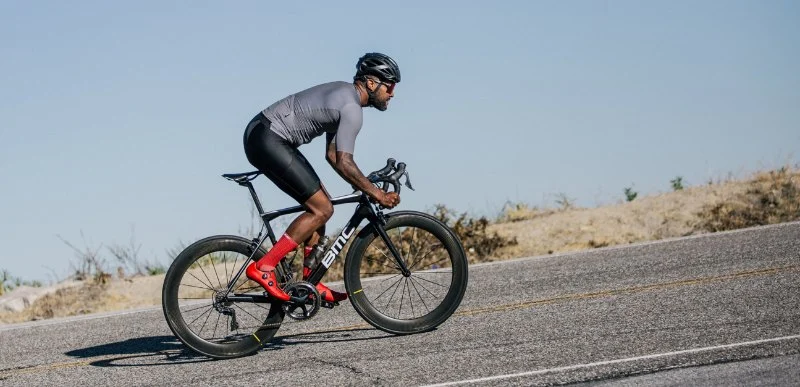
How to Train for Hill Climbs: Tips for Strength and Endurance
Hill climbs can be one of the most challenging yet rewarding aspects of cycling. Whether you’re training for a race, or simply want to improve your performance on hilly terrain, building strength and endurance is key. In this article, we’ll provide you with expert tips and actionable steps to help you prepare for hill climbs and conquer them with confidence.
1. Understanding the Challenge of Hill Climbs
Climbing hills on a bicycle is not just about pushing harder on the pedals—it’s about using the right techniques and building the appropriate strength. Hill climbs require endurance, as they demand sustained effort over an extended period, often under varying gradients. The combination of a steep incline and the constant demand for power can make hill climbs daunting, especially if you don’t train for them specifically.
- Physical Strength: Hill climbing requires stronger leg muscles and improved cardiovascular capacity.
- Endurance: You need to maintain a steady pace, so developing stamina is crucial for long climbs.
- Pedal Technique: Proper form and pedal stroke efficiency can make a huge difference in your ability to climb efficiently.
2. Building Leg Strength for Hill Climbs
The primary muscles involved in hill climbing are your quads, hamstrings, and calves. To tackle tough climbs, you need to develop strength in these muscle groups. Here are some exercises that will help you build the power necessary to climb hills with ease:
1. Strength Training Exercises
Strength training is a vital part of preparing for hill climbs. Focus on exercises that target your legs, but don’t neglect your core, as it’s also important for maintaining good posture while climbing. Here are a few strength exercises to include in your routine:
- Squats: Squats are excellent for building strength in the quads, glutes, and hamstrings. Perform different variations like bodyweight squats, goblet squats, and weighted squats to challenge your muscles.
- Lunges: Forward, reverse, and walking lunges all help develop the strength and stability needed for hill climbing.
- Leg Press: Using the leg press machine can simulate the pushing motion required during a hill climb and allow you to lift heavier weights for increased strength.
- Deadlifts: Deadlifts will strengthen your hamstrings and lower back, helping you maintain a strong, steady posture while climbing.
2. Pedal Power and Technique
In addition to strength training, refining your cycling pedal technique is essential for efficient hill climbing. Focus on developing smooth pedal strokes to avoid wasting energy. Practice these key techniques:
- Focus on Full Pedal Strokes: Rather than simply pushing down on the pedals, think about making full circles. Pull up on the pedal as well as pushing down.
- Use Your Gears: Shift into a gear that allows you to maintain a steady cadence. You don’t want to be forced into grinding through a climb.
- Stay Seated When Possible: While standing can help you generate power, staying seated allows you to maintain a more efficient pedal stroke and conserve energy.
3. Increasing Endurance for Hill Climbs
While strength is essential for hill climbs, endurance allows you to maintain a steady pace and avoid fatigue. Here’s how you can increase your endurance and be able to handle longer and steeper climbs:
1. Longer Distance Rides
Endurance is built over time through longer rides at a moderate pace. When training for hill climbs, it’s crucial to include longer rides with varied terrain in your weekly schedule. Gradually increase your distance over time, and aim to include more hilly sections as you progress.
2. High-Intensity Interval Training (HIIT)
HIIT workouts are a great way to build cardiovascular endurance while simulating the efforts of a hill climb. Incorporate short, intense bursts of speed followed by recovery periods to simulate the climbing effort. For example:
- Warm up for 10-15 minutes, then sprint for 1 minute.
- Recover for 2 minutes by cycling at a moderate pace.
- Repeat this process 6-8 times, and cool down after.
3. Climb-Specific Workouts
Nothing prepares you better for hill climbs than actually climbing. If possible, find a nearby hill or set your trainer to simulate a climb. Alternate between standing and seated climbing positions to work different muscle groups, and try to gradually increase the length and gradient of the climb over time.
4. Fuel Your Body for Hill Climbing
To perform well during long hill climbs, you need to properly fuel your body. A well-balanced diet and hydration plan are essential for maintaining energy during your rides. Keep these tips in mind:
- Stay Hydrated: Drink water consistently throughout your ride. Dehydration can lead to premature fatigue.
- Carbohydrates are Key: Eat complex carbohydrates, like whole grains, fruits, and vegetables, to ensure a steady energy supply during climbs.
- Protein for Recovery: After your training, consume protein to help rebuild muscle fibers that were used during hill climbs.
5. Mental Preparation for Hill Climbs
Hill climbing is as much a mental challenge as it is a physical one. Staying focused, positive, and determined can make all the difference in tackling steep grades. Use visualization techniques to imagine yourself conquering the climb and focus on steady progress rather than the final summit. Break the climb into smaller sections, and celebrate small wins along the way.
Conclusion
Training for hill climbs requires a combination of strength, endurance, proper technique, and mental fortitude. By focusing on leg strength, increasing your endurance with long rides and HIIT, and fueling your body appropriately, you’ll be well on your way to conquering even the toughest climbs. Remember to stay consistent with your training, and before you know it, you’ll be tackling hills with ease.
For more cycling tips and recommendations on the best products for your training, visit Cycling Guider.







 Billet BMX5.0 (2 reviews)
Billet BMX5.0 (2 reviews) Far East Children Bicycle Factory1.0 (1 reviews)
Far East Children Bicycle Factory1.0 (1 reviews) Archer Motorsports, Inc.4.0 (8 reviews)
Archer Motorsports, Inc.4.0 (8 reviews) YEP Bike Works4.0 (55 reviews)
YEP Bike Works4.0 (55 reviews) Gorham Bike & Ski4.0 (498 reviews)
Gorham Bike & Ski4.0 (498 reviews) Alchemy Bikes4.0 (37 reviews)
Alchemy Bikes4.0 (37 reviews) How to Teach Kids to Ride a Bike: A Step-by-Step Guide for Parents
How to Teach Kids to Ride a Bike: A Step-by-Step Guide for Parents Tips for Riding on Busy City Streets: Smart Strategies for Urban Cyclists
Tips for Riding on Busy City Streets: Smart Strategies for Urban Cyclists Best US National Parks for Mountain Biking: Ride Epic Trails Across America
Best US National Parks for Mountain Biking: Ride Epic Trails Across America Best Aero Helmets for Time Trials and Racing
Best Aero Helmets for Time Trials and Racing How to Clean and Lubricate Your Bike Chain Like a Pro
How to Clean and Lubricate Your Bike Chain Like a Pro 10 Must-Have Items for Long-Distance Cycling Trips
10 Must-Have Items for Long-Distance Cycling Trips